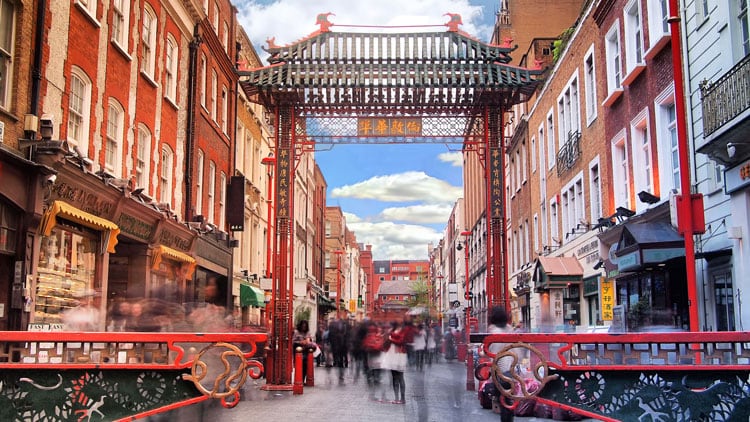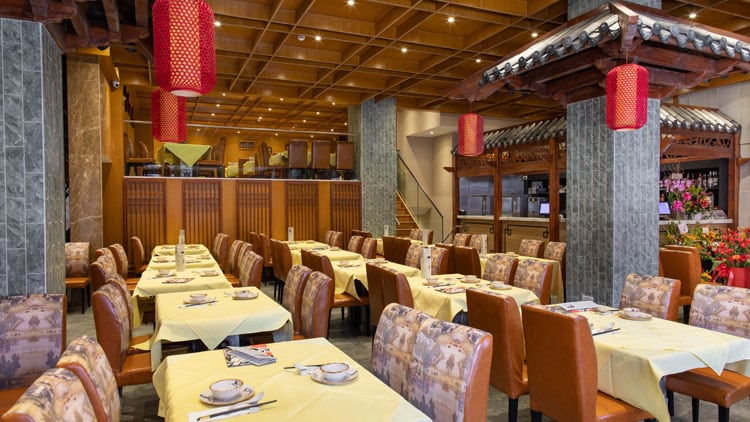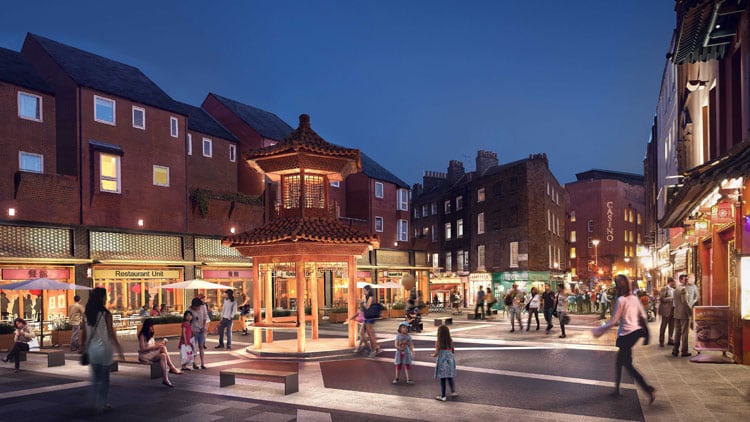London’s Chinatown started life in Limehouse, east London, catering to Chinese sailors in Docklands. The area was heavily bombed during The Blitz, prompting many of its residents and business owners to move elsewhere, most notably to a then grotty no-man’s land between Soho and Covent Garden (see A very brief history of London’s Chinatown, below).
Eighty or so years later, many restaurateurs in the area feel as if they are under fire once again. A place where small businesses once flourished is becoming an increasingly perilous environment for those without scale and heavyweight backing.
Working hard to make ends meet
Once regarded as being within the prime location for any Chinese restaurant business, traditionally run family-owned restaurants in Chinatown now find themselves faced with unprecedented levels of competition. The handful of streets that make up the enclave – in the middle of some of the capital’s priciest real estate – are now home to more than 100 restaurants. In the face of such fierce competition, twinned with rising rents and rates, some are now feeling the pinch.
Sunny Lee’s family has been in the restaurant business for several generations, first in Hong Kong and later in London. His father opened Harbour City on Gerrard Street in 1975 and in 2013 took on the restaurant space above New Loon Moon Supermarket on the same road.
“Rents were high in 2013 but the market was strong,” says Lee. “Over the next couple of years, the market softened. We found it difficult to run two places in Chinatown at the same time. The rents are so high that if you take your eye off the ball for a moment you start losing money. So my father and I decided to get rid of Harbour City.”
Things remain challenging at New Loon Fung and Lee and his father – who is approaching 70 yet remains a near constant presence in the restaurant – have to work hard to make ends meet.
“We’re finding that the Chinese people who were the bedrock of our business are coming to central London less and less. We’re having to make that loss up by working with tour operators to fill the restaurant with coaches of Chinese and Malaysian tourists coming back from trips to Bicester Village or Windsor. The value per head is low but it’s a good way to fill the restaurant during the shoulder periods.”
Lee says the majority of family-run establishments are spending an unhealthily high proportion of their turnover on rent and rates. “Most people we know pay at least £200,000 a year in rent. Our rent is not too bad at the moment because we’re on the first floor, but business rates are extortionate. Everything is going up and up. In the long run I can’t see it being sustainable. It’s sad to think that one day Chinatown as we know it now won’t exist.”
Ms Juanzi is head of operations for Sichuanese restaurateur Shao Wei, whose portfolio includes Ba Shu, Baiwei and the Baozi Inn brand. The latter operates two restaurants in and around Chinatown – one on Newport Court and another on Soho’s Romilly Street – and recently expanded out of the area with a restaurant at Victoria’s Market Halls (it also has an upcoming flagship site slated to open near Borough Market later this year). She has a similarly pessimistic view of the area. “Chinatown is suffering,” she says. “Business is slow, and the rents are too high. We would not open another restaurant here.”
One Chinese restaurateur with inside knowledge of the area who is keen to remain anonymous says that smaller players are increasingly being forced out by sudden hikes in rent. “A small business’ rent going up from £250,000 to £320,000 overnight isn’t sustainable. Restaurants are run on slim margins as it is. And if you want to argue about it you need to get yourself a lawyer, which can be very expensive.”
Shaftesbury is the enclave’s key landlord, owning around 50% of its commercial property. Its restaurant strategy executive Julia Wilkinson has been working with restaurateurs in Chinatown for over a decade and says that while there has been a history of cheaper rents in the area, it’s inevitable that prices are now in line with other areas of the West End.
“Supply and demand and the need for long-term security mean that rents do rise,” she says. “Most of the operators I speak to are reasonably happy with what they pay. You’ve got to consider that Chinatown is one of the few areas in London to be busy for lunch and dinner every day of the week. Chinatown is a draw in and of itself, but it also benefits from the proximity to the theatres on Shaftesbury Avenue and the cinemas in Leicester Square.”
Some restaurants are, of course, faring better. Bun House recently chose Chinatown’s Lisle Street for its second West End restaurant and Sichuanese restaurant group Jinli has launched a second Chinatown site in Shaftesbury’s Central Cross development following the success of its inaugural Leicester Street location, purported to be one of the area’s busiest restaurants.
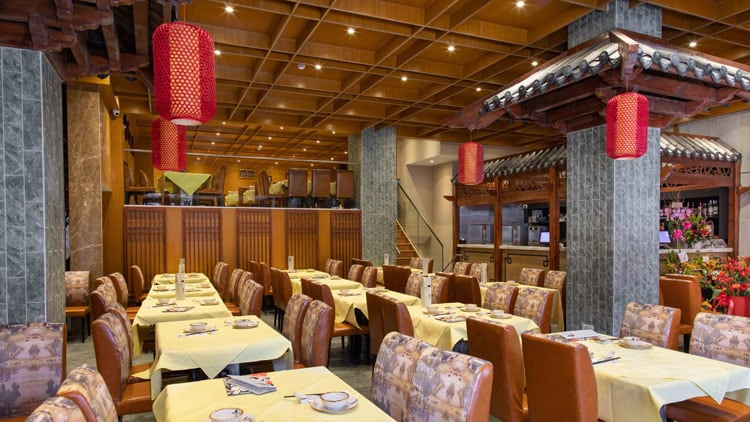
Its young owner Yi Fei puts his success down to not changing the food to suit UK palates (Chinese diners outnumber non-Chinese diners by about 10 to one). “We have one to two-hour queues at Leicester Street, so it made sense to open another in the area, although we have changed the menu a bit at the Central Cross site to make it more accessible to non-Chinese diners because it’s in a more mainstream location.”
An influx of overseas investment
Established Chinatown restaurateurs are contending with a big influx of investment from mainland China. With rent largely dictated by what people are willing to pay, aggressive expansion by deep-pocketed players is bad news for smaller operators.
“In the 80s and 90s the majority of restaurants in Chinatown were family run, but that’s not the case now. An increasing number of restaurants in the area are run remotely by mainland Chinese,” says high-profile chef Andrew Wong, whose extended family ran a number of restaurants in Chinatown, including Gerrard’s Corner.
“These investors don’t necessarily have a restaurant background but enjoy the prestige of opening a restaurant in London. And Chinatown seems like an obvious location as it’s full of busy restaurants. They often don’t know the market and are willing to take properties with high rents, which pushes up prices for everyone else.”
The last few years have also seen a big push from well-established Asia-based hospitality businesses into London. They are attracted by –among other things – the weak pound and the large amount of holidaying and studying Chinese, who typically have a high disposable income and are hungry for brands from back home.
“This is a market that has been under-served for some time. Asian people want to be able to key into brands they already respect and enjoy when in London,” says Ted Schama, a partner at property agent Shelley Sandzer. Recent openings from big Chinese-owned companies in London include Imperial Treasure in St James’s and Din Tai Fung in Covent Garden, both of which are within easy reach of Chinatown.
Earlier this year global hotpot chain Hai Dai Lao took a site on the fringes of Chinatown a little to the east of Piccadilly Circus on Coventry Street. Located on the ground floor of the building that used to house the Trocadero entertainment centre, the brand’s debut European location is enormous at 10,000sq ft.
Many smaller Chinatown businesses are concerned by the opening of this behemoth, and not just because of its potential to hoover up a large number of covers. “For bigger Chinese-owned companies, having a restaurant in or near Chinatown is more about brand building than having a viable business. Hai Dai Lao has done very little marketing to either the English or Chinese market. It’s very quiet,” says Lee.
Hai Dai Lao operates 300 restaurants worldwide, so it can afford to operate some loss-making sites in prestigious locations. The Hong Kong Exchange-listed brand is planning to expand aggressively in the UK and Europe, and Chinatown is an obvious place to plant its flag.
The diversification of Chinatown
In common with others around the world, London’s Chinatown is rapidly becoming less Cantonese. In many ways this diversification is a positive: an oversupply of restaurants serving pretty much the same menu doesn’t help anyone, especially against the backdrop of non-Chinese diners becoming more experimental in their eating choices and a greater number of Chinese diners in London who aren’t from Hong Kong.
“Chinatown will always be prominently Chinese, with Cantonese restaurants making up a key part of the mix,” says Wilkinson. “But within a food destination of 100 restaurants there is room to be a bit more playful, and there was an element of saturation of Cantonese restaurants. We encourage diversification of Chinese regional cuisines and complementary East Asian concepts while respecting the area’s heritage.”
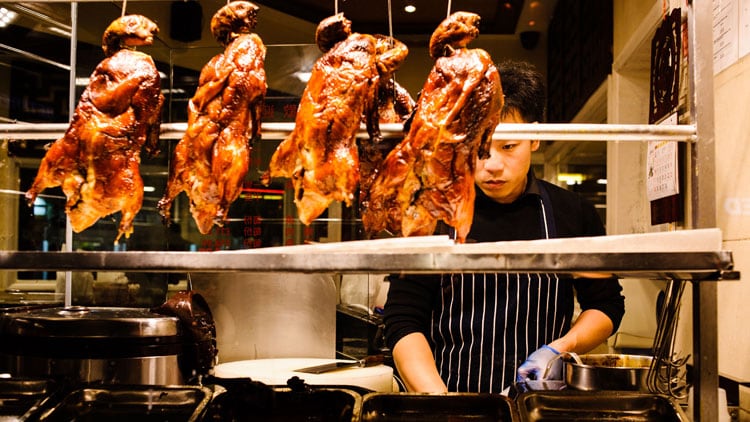
But the introduction of other regional Chinese cuisines, more specialist concepts such as hotpot restaurants and even pan-Asian restaurants, is symptomatic of a very serious issue for Chinatown – the squeeze on experienced chefs.
“My parent’s generation are reaching retirement age. Some can’t work any more, others don’t want to,” says Lee. “And in most families the plan wasn’t for the children to follow their parents into the business, so there’s no one to replace them. New Loon Moon Restaurant specialises in dim sum but these days we only have a couple of Cantonese people in the kitchen. In an ideal world they would all be Cantonese because dim sum is a speciality of Hong Kong.”
Sweeping changes to immigration legislation around five years ago have made it nearly impossible to bring skilled chefs in from Asia, so restaurant owners looking for experienced chefs are restricted to Chinese people who are already here. As well as causing recruitment headaches, the skills shortage in Chinatown and further afield is putting the whole economic model under pressure.
“It’s basic supply and demand. Chinese back of house labour is incredibly expensive,” says Wong who, despite his status as one of the country’s most exciting young chefs, experienced significant recruitment challenges at his latest opening Kym’s in The City’s Bloomberg Place development. “You’re talking up to 40% higher than a western chef with a comparable level of experience. When you combine this with the very high rents in Chinatown, things get difficult.”
A changing restaurant landscape
This gaping skills gap is reshaping Chinatown’s restaurant landscape. Restaurant openings over the past few years have been dominated by concepts that require fewer skilled chefs, including restaurants serving smaller menus of street food-inspired dishes, dessert bars and hotpot restaurants.
“Hotpot restaurants are simple to run and don’t require many skills,” says food writer Fuchsia Dunlop. “You just need a good broth. Then it’s a case of slicing up a load of ingredients. It’s tremendously popular with the young Chinese people who make up a big proportion of the market in Chinatown. Hotpot is fun, but I do worry that if everything goes in that direction we will lose some of the more subtle Chinese cooking.”
Shao Wei is one of Chinatown’s most influential restaurateurs having pioneered Sichuanese and other less well-represented regional Chinese cuisines at restaurants including Ba Shu, Bashan and Baiwei. He is also one of the few multi-site restaurateurs in the area to enjoy consistent critical success.
Last year he rebranded his Romilly Street restaurant Bashan to his more casual Baozi Inn brand. It being deemed too similar to the nearby Ba Shu was a factor, but the main reason for the change was a lack of good Sichuanese chefs and wok chefs.
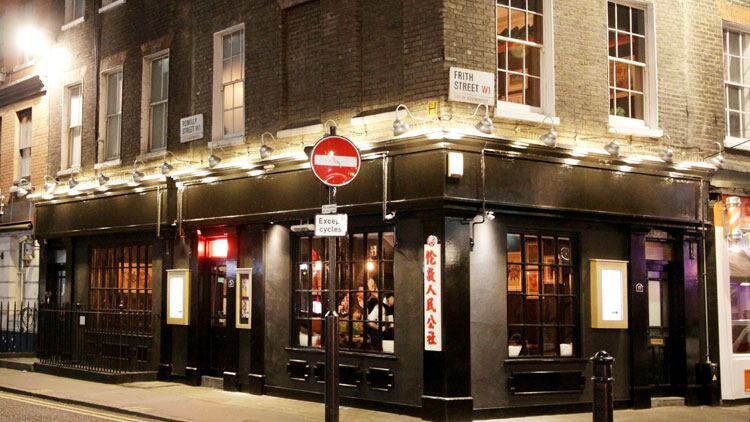
Wei has completely overhauled the menu at Baozi Inn for the same reason. The brand started life on Newport Court serving hearty Sichuanese and northern Chinese dishes alongside the eponymous fluffy buns. But Baozi Inn now takes a more pan-regional approach to Chinese cuisine, with a focus on street food and dim sum (most would assume the latter would be tricky, but wrapping dumplings is less skills intensive than achieving the very specific authentic taste of Sichuan food and wok cooking).
“Street food is not complicated and is easy to produce quickly. The dim sum is more complicated, but you only need one skilled chef for that as it is prepared ahead of time – the actual serving of it is straightforward. Both can be sold at an affordable price,” says Ms Juanzi, who has employed a mix of Chinese and Portuguese chefs to cook the new menu.
Dunlop believes the skills shortage is having a marked impact on the quality in Chinatown. “Greater diversity is a good thing. But there is a decline in the quality and variety of Cantonese food, which is sad because it’s a wonderful cuisine. When I started reviewing restaurants for Time Out 20 or so years ago there were quite a few small Cantonese restaurants doing typical and interesting Cantonese cooking. That’s getting harder and harder to find.”
Rising costs and a tougher trading environment are also impacting on the overall quality of restaurants in the area. “Most people in Chinatown aren’t willing to spend a lot on Chinese food. It is perceived as a cheap place to eat,” says Wong. “As costs rise, the only thing a lot of restaurants can do is to try and ram as many people through the door as physically possible. That’s going to have a negative effect on quality.”
Arrival of a new wave of operators
Perhaps because of this, the new wave of London Chinese restaurants finding critical success are generally not in Chinatown. The enclave is not an ideal environment for new businesses that want to take a few risks because it requires a big investment and overheads are high.
“There is a new generation of Chinese people who are having fun with their cuisine in unconventional ways,” says Dunlop. “They are often from a different educational background. Chinatown also has a traditional and rather touristy feel. These more indie outfits are coming from a different place.”
These younger and usually more social media-savvy players are taking a more contemporary approach to launching and marketing their businesses. For example, the Taiwan-inspired Bao started life as a street food stall in Hackney and, after acquiring backing from JKS Restaurants, now operates three bricks-and-mortar Bao restaurants alongside the more upmarket Xu, which is located in the fringes of Chinatown on Rupert Street.
Another recent success story is Xi’an Impression, which opened outside the Emirates Stadium in Holloway in 2015. Its chef and co-owner Guirong Wei is an alumnus of Bashan, but now cooks food from her home province of Shanxi in northern China. She has since opened more restaurants, most recently Bloomsbury’s Master Wei.
“This is a great example of someone who has struck out on their own and is cooking the dishes of her home town. She’s doing it for the love of food and there’s a personal touch, which is very nice to see,” says Dunlop.
Shaftesbury has pushed to get a new breed of more contemporary operator into Chinatown. Its partial redevelopment of Newport Court as part of the Central Cross project saw the inclusion of three dessert bars that are squarely aimed at the Instagram generation (it also secured Bubblewrap on Wardour Street, which serves social media-friendly egg waffles, and ice cream sandwich specialist Yolkin on Rupert Street).
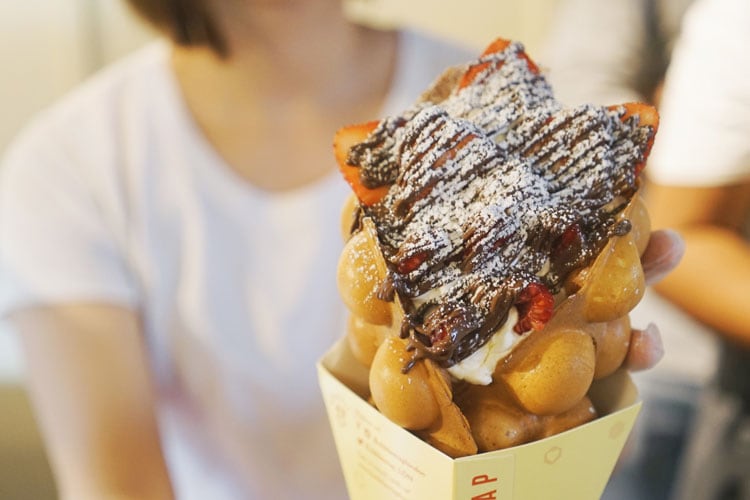
“Brands such as these reflect what’s going on in Asia and are also a great way of broadening Chinatown’s appeal by creating huge buzz,” says Wilkinson. But for some in the area this style of venue is a symptom of an identity crisis, a depressing dumbing down that highlights how difficult it is for more conventionally run restaurants to make money (in general, dessert-focused places are small, serve high-margin dishes and employ very few staff).
“It’s important to remember that these issues aren’t unique to London,” says Dunlop. “This is happening in Chinatowns all over the world. Everything about Chinatowns, from the architecture to the style of the food, is a product of a particular period of Cantonese immigration which is now over. Now people are thinking, ‘where do we go from here?’”
A very brief history of London’s Chinatown
The current London Chinatown started to be established in the early 1970s by Hong Kong immigrants, who were then counted as British subjects due to the colonial relationship between the two countries.
It was not until 1978 that mainlanders were able to come to the UK in significant numbers, an arrangement which has had a marked impact on the Chinese restaurant landscape both in and outside Chinatown, with the majority of businesses still Cantonese.
In the 1980s, Chinese families started moving in to what was then a largely residential area with rundown housing. Rents in Chinatown were cheap and leases were short, reflecting the undesirability of the area and the fact the enclave was slated for redevelopment. This never happened, and the businesses remained and prospered, expanding further into the West End from Chinatown’s Gerrard Street epicentre.
In 2019 Shaftesbury completed a partial redevelopment of some buildings on the eastern edge of Chinatown. The Central Cross project has seen the launch of several new restaurants and dessert bars. There are now more than 100 restaurants in Chinatown, which is bound by Shaftesbury Avenue to the north, Rupert Street to the west, Charing Cross Road to the east and Leicester Square to the south.
Shaftesbury is the area’s key landlord, owning roughly 50% of the area’s commercial property.
This is a web version of an article that first appeared in the July issue of Restaurant magazine, the leading title for the UK's restaurant industry. For more features, comment, interviews and in-depth analysis of the restaurant sector subscribe to Restaurant magazine here.

